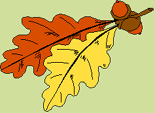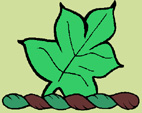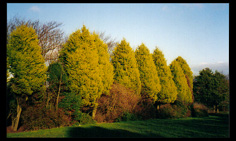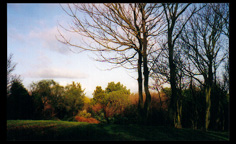 |
|
|
|
|
|
|
|
|
|
|
|
|
|
|
|
|
|
|
|
|
 |
|
|
 |
The leaves of a green plant are the part that exchanges gases with its surroundings. The leaves also give out or transpire water. Green plants are able to make their own food in a process called photosynthesis. When sunlight is present the leaves use light energy and take in carbon dioxide. This is converted into sugars and starches which can be stored. Oxygen passes back to the atmosphere. |
|
 |
Plants need to respire and use the food they have made, together with oxygen to produce energy. The leaves allow carbon dioxide and water vapour to escape into the atmosphere. |

